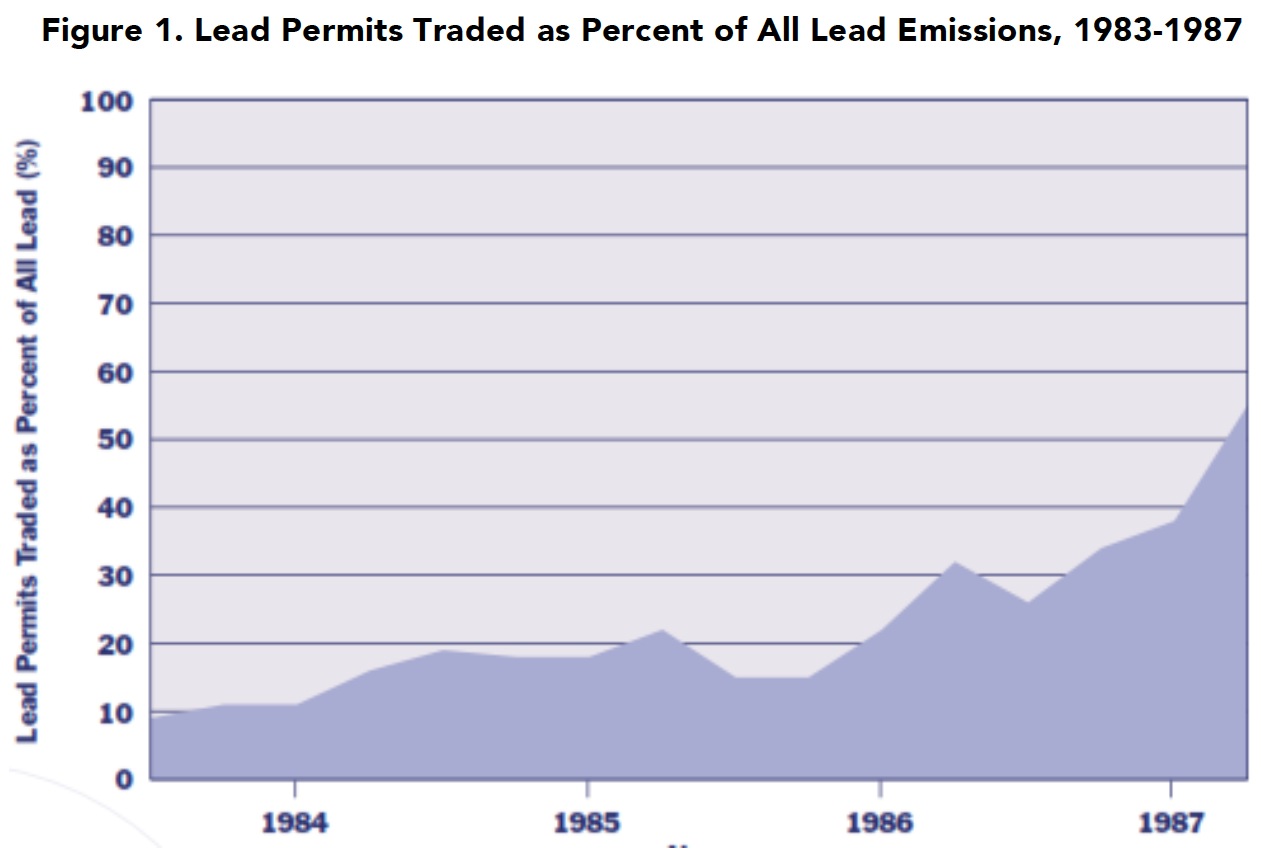ADVANCED ENERGY ECONOMY INSTITUTE (AEE INSTITUTE)
Executive Summary
On June 2, 2014, the Environmental Protection Agency (EPA) proposed the Clean Power Plan (CPP) to implement section 111(d) of the Clean Air Act (CAA). While the proposed rule does not mandate a market-based approach to compliance, ample evidence from previous CAA rules suggests that market-based mechanisms are likely to develop under the CPP, and that these mechanisms will spark an industry response that will make available a wide array of cost-effective compliance options.
Past Rules Show that Market-Based Mechanisms Unleash Industry Response
By setting a regulatory signal and allowing for market-based compliance mechanisms, EPA rules have initiated the development of active and efficient markets in reducing the lead content in gasoline, combatting acid rain, and controlling regional transport of ozone due to emissions of sulfur dioxide (SO2) and nitrogen oxides (NOx). These prior regulatory programs offer strong evidence that industry responds rapidly and effectively to regulatory signals set by EPA when market-based compliance mechanisms are allowed, enabling the development and delivery of a wide array of compliance solutions at low cost.
The successful development of efficient and active markets under these programs is demonstrated by the widespread use of trading by affected entities, the use of credit banking where available, and the lack of volatility in market prices for emission allowances. The development and use of markets for emission allowances under these programs provided affected entities with a range of cost-effective emission reduction measures to choose from. As a result, emissions were reduced more quickly than required, compliance costs were significantly lower than expected, and well-functioning private markets in pollution-reducing technologies evolved rapidly in response to the EPA rules.
The Advanced Energy Industry Is Ready to Respond to Market-Based Mechanisms
There is every reason to believe the same thing will happen under the CPP. The basic structure of the CPP allows and even encourages the development of market-based compliance mechanisms that would facilitate the use of technologies and services that deliver emission reductions. Technologies suitable for CPP compliance include a wide range of advanced energy products and services available in the market now that are particularly well suited to such market-based mechanisms. These include electricity generation technologies like natural gas, wind, solar, hydro, and nuclear power; demand technologies and services like building energy efficiency and demand response; and electricity delivery and management technologies like energy storage. The U.S. market for these and other advanced energy technologies and services was $200 billion in 2014, equal to the pharmaceutical industry. Utilities and power plant operators already engage in a variety of markets to procure advanced energy — from direct purchase or operation of renewable resources, to investment in energy efficiency programs, to trading certificates for the attributes of these resources.
Not surprisingly, a number of stakeholders — ranging from state regulators to utilities to regional grid operators to credit-tracking vendors — have already initiated the process of adapting the existing mechanisms used in these advanced energy markets to support market-based options that facilitate CPP compliance. Given the structure of the proposed rule and the status of current markets, the development of market-based compliance mechanisms is a probable, if not inevitable, outcome.
Market-Based Compliance Will Achieve Goals, Reduce Cost, Spur Economic Growth
The market-readiness of a wide array of compliance measures available to respond to a market signal for emission reductions indicates that compliance under the CPP will likely mirror not only the approach, but also the success of market-based compliance outcomes under prior CAA rulemakings. Robust markets for advanced energy technologies and services, coupled with existing tracking systems customized to meet CPP requirements, together provide a nearly turnkey solution for state compliance needs, ready to deliver emission reductions as soon as the implementation period begins. In turn, a clear and timely regulatory signal from the CPP will drive further investment and deployment of advanced energy technologies and services, delivering emission reductions while also driving market growth, technology improvement, and associated benefits ranging from grid modernization to job growth.
Download full version (PDF): Markets Drive Innovation
About the Advanced Energy Economy Institute
www.aee.net
The Advanced Energy Economy Institute (AEE Institute) is a 501(c)(3) charitable organization whose mission is to raise awareness of the public benefits and opportunities of advanced energy. AEE Institute provides critical data to drive the policy discussion on key issues through commissioned research and reports, data aggregation, and analytic tools. AEE Institute also provides a forum where leaders can address energy challenges and opportunities facing the United States. AEE Institute is affiliated with Advanced Energy Economy (AEE), a 501(c)(6) business association, whose purpose is to advance and promote the common business interests of its members and the advanced energy industry as a whole.
Tags: Advanced Energy Institute, AEE Institute, Clean Power Plan, CPP








 RSS Feed
RSS Feed